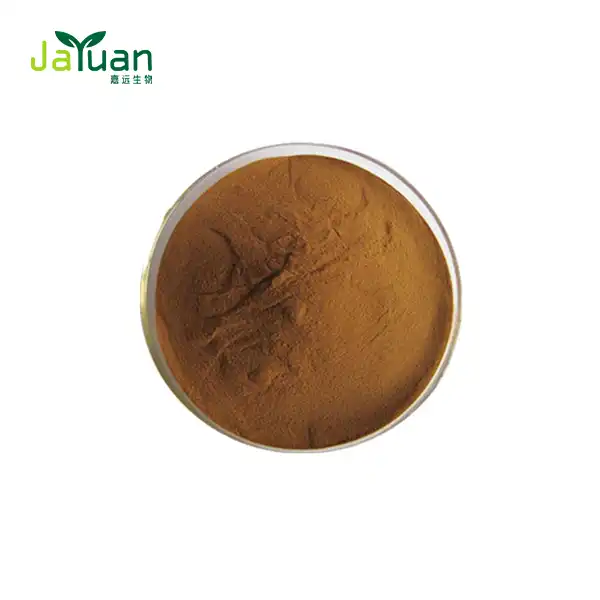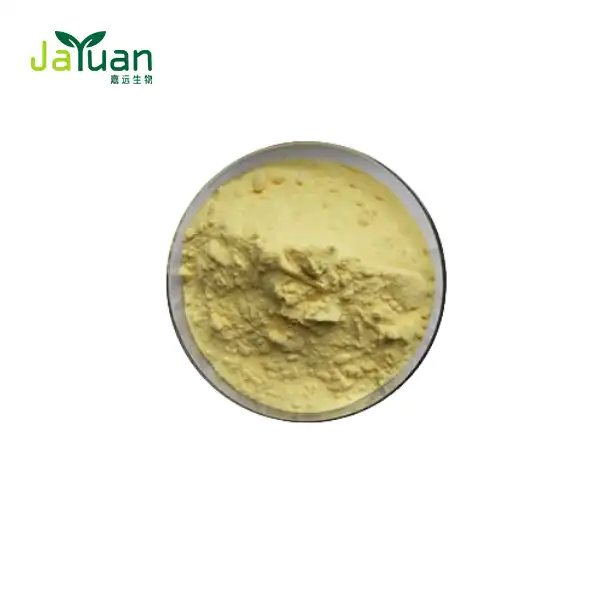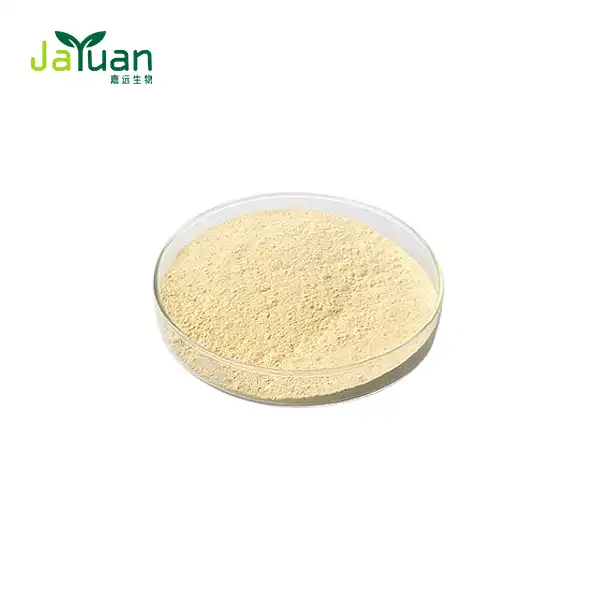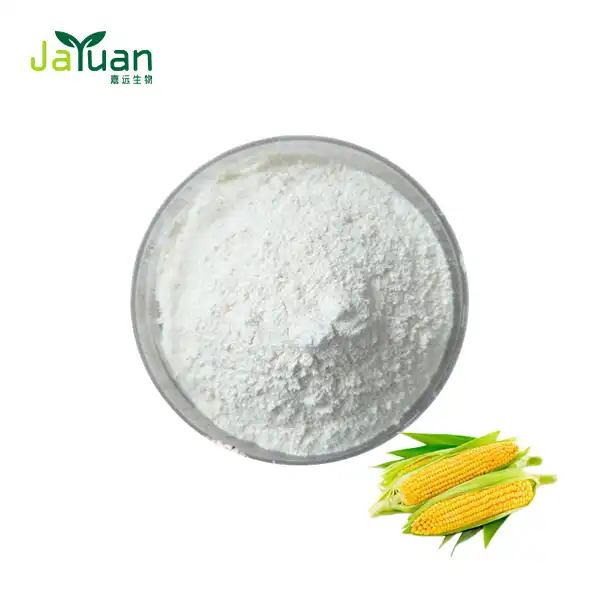What Is Pueraria Root Used For?
Introduction of Pueraria root
Pueraria root, also known as kudzu root, is a traditional Chinese herb with a long history of use in herbal medicine.
It comes from the Pueraria lobata plant, native to China, Japan, and Korea. The root contains various compounds that are believed to offer several health benefits.
In this article, we will explore the traditional and modern uses of Puerarin Powder, its potential health benefits, and the scientific evidence supporting these claims.
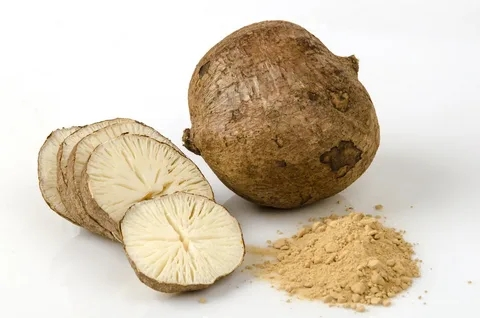
Traditional Uses of Pueraria Root
Kudzu, or pueraria root, has long been used in traditional Asian medicine, especially in Chinese and Japanese traditions.
For decades, this modest root has been hailed for its many health benefits. Its versatility and efficacy are demonstrated by the vast spectrum of diseases and disorders for which it has been applied.
Historical Context and Cultural Significance
In traditional Chinese medicine (TCM), pueraria root is known as "gegen" (葛根). The use of gegen dates back over two millennia, with its first recorded mention in the ancient medical text "Shennong Bencao Jing," which translates to "The Divine Farmer’s Materia Medica." This text, attributed to the mythical Emperor Shennong, outlines various herbs and their uses and categorizes pueraria root as a superior herb, implying that it offers significant health benefits with minimal side effects.
Applications in Alleviating Fever and Detoxification
The treatment of a typical cold's side effects and fever is one of the essential conventional purposes for pueraria root.
As per Conventional Chinese Medication (TCM), the foundation of pueraria is remembered to have cooling properties that guide in the expulsion of intensity from the body and lessen fever.
It is frequently prescribed as a tea or decoction for the treatment of febrile conditions-related headaches, stiff necks, and muscle aches.
Additionally, pueraria root is prized for its ability to cleanse the body.
It is habitually used to eliminate poisons from the body, which is in accordance with the all encompassing methodology of Conventional Chinese Medication (TCM), which accentuates keeping up with balance and disposing of unsafe substances.
Digestive Health and Gastrointestinal Relief
Pueraria root has also traditionally been used to relieve gastrointestinal distress and promote digestive health.
It is utilized to treat gastrointestinal issues like looseness of the bowels and diarrhea.
The root's soothing properties are believed to regulate the stomach and intestines, providing relief from discomfort and promoting normal digestive function. Additionally, Puerarin Powder is sometimes included in formulations aimed at alleviating nausea and vomiting, making it a multifaceted remedy for various digestive disturbances.
Cardiovascular Benefits
Pueraria root has traditionally been utilized to improve cardiovascular health. It is believed to improve blood flow and lower blood pressure in Traditional Chinese Medicine. The root's alleged capacity to increase blood flow and dilate blood vessels has made it an effective treatment option for angina and hypertension. The holistic and systemic approach that is characteristic of Traditional Chinese Medicine (TCM) aims to treat underlying imbalances rather than just symptoms to achieve these cardiovascular benefits.
Modern Recognition and Ongoing Research
Even though pueraria root has been used for hundreds of years, many of these traditional purposes are now being supported by contemporary science. Pueraria root contains a number of bioactive chemicals that have been discovered recently. One such compound is puerarin, which has shown promise in therapeutic applications. Our knowledge of this amazing root and its possible advantages keeps growing thanks to this synthesis of traditional knowledge and cutting-edge scientific research.
To sum up, pueraria root has been traditionally used for a variety of health advantages, including fever treatment, body detoxification, digestive health support, and improved cardiovascular function. Its continued use in conventional medicine is evidence of its efficacy and the regard it is accorded as a natural cure.
We may continue to learn more about the capabilities and applications of this ancient root as research progresses.
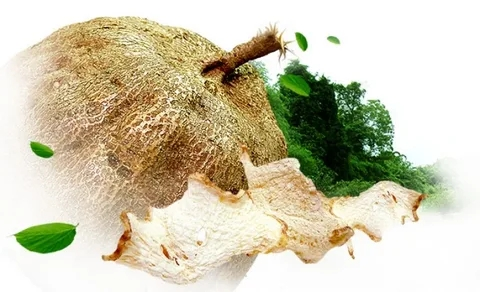
Modern Uses and Health Benefits
Lately, pueraria root has acquired notoriety in the West as a natural enhancement.
It is frequently promoted for its potential health advantages, such as:
Symptoms of menopause: A few investigations recommend that pueraria root might assist with diminishing menopausal side effects, for example, hot blazes and night sweats, because of its estrogen-like impacts.
Bone Wellness: Isoflavones found in pueraria root are thought to help maintain bone density and lower the risk of osteoporosis in postmenopausal women.
Skin Wellness: Because of its antioxidant and anti-inflammatory properties, pueraria root extract is frequently used in skincare products to help improve skin health and reduce the signs of aging.
Addiction to alcohol: Some examination recommends that Puerarin Powder might assist with lessening liquor desires and reliance, albeit more investigations are expected to affirm these impacts.
Scientific Evidence
For ages, kudzu root, otherwise called Pueraria root, has been a fundamental part of conventional medication.
Yet, present day science has as of late begun to recognize and affirm the bunch wellbeing benefits connected to this spice.
Pueraria root contains various bioactive synthetic compounds, including genistein, daidzein, and puerarin, which researchers have found by means of broad examination and clinical examinations and which are answerable for a portion of the root's restorative properties.We examine some of the most important scientific results that back up the traditional applications of Pueraria root here.
Cardiovascular Health
Pueraria root has numerous benefits, one of which is its favorable effect on cardiovascular health.
One of the main isoflavones in pueraria root, puerarin, has been shown in numerous studies to assist with blood pressure regulation and blood flow enhancement.
Additionally, it has been demonstrated that pueraria root lowers cholesterol levels. Research demonstrates that it can decrease low-thickness lipoprotein (LDL) cholesterol while expanding high-thickness lipoprotein (HDL) cholesterol.
This lipid-controlling impact forestalls the development of blood vessel plaque, consequently lessening the gamble of atherosclerosis and other cardiovascular sicknesses.
Menopausal Symptom Relief
Another area where pueraria root has shown significant promise is in alleviating menopausal symptoms. Studies have demonstrated that purerarin can pass the blood-brain barrier and shield brain tissue.
For example, oxidative stress and inflammation in the brain are important factors in the development of neurodegenerative disorders such as Parkinson's and Alzheimer's, and a study published in the Journal of Neuroscience Research indicated that puerarin lowered these levels in the brain.
Puerarin might be used to forestall mental degradation and further develop cerebrum wellbeing, as per the review's discoveries.
Anti-Diabetic Properties
The anti-diabetic potential of pueraria root has also been a focus of scientific investigation. Puerarin has been shown to help regulate blood sugar levels by increasing insulin sensitivity and promoting glucose uptake by cells.
Puerarin-treated diabetic rats showed markedly improved pancreatic function and blood glucose levels compared to untreated rats in a study published in the Journal of Diabetes Research.These results suggest that Puerarin Powder may work well as a dietary supplement for treating diabetes.
Anti-Inflammatory and Antioxidant Activities
Pueraria root is wealthy in intensifies that display solid mitigating and cancer prevention agent properties.
These qualities can combat chronic disorders linked to inflammation and oxidative stress.
For example, puerarin has been shown in a study that was published in the International Journal of Molecular Sciences to increase the activity of antioxidant enzymes and decrease the production of cytokines that are linked to inflammation.
This dual action protects cells and general health.Both cells and overall health are safeguarded by this dual action.
Conclusion
In conclusion, the scientific evidence supporting the health benefits of pueraria root is robust and continually growing. From cardiovascular health and menopausal symptom relief to neuroprotection and anti-diabetic effects, pueraria root demonstrates a wide range of therapeutic potentials.Conclusion
Pueraria root is a traditional Chinese herb with a range of potential health benefits.
Preliminary study suggests that it may help ease menopausal symptoms, promote liver health, and improve cardiovascular health, among other benefits.
However, additional research is necessary to completely understand its effects.
As with any herbal supplement, it is best to speak with a healthcare provider before using pueraria root, especially if you have any underlying medical concerns or are taking medication.
For more information about Puerarin Powder and its potential benefits, please contact us at sales@jayuanbio.com.
References:
· Phytotherapy Research - Cardiovascular effects of Pueraria lobata root extract: https://doi.org/10.1002/ptr.6499
· Journal of Clinical Psychopharmacology - Effects of Puerariae Radix Extract on Ethanol Intake in Alcohol-Preferring Rats: https://doi.org/10.1097/JCP.0b013e3181e1043f

